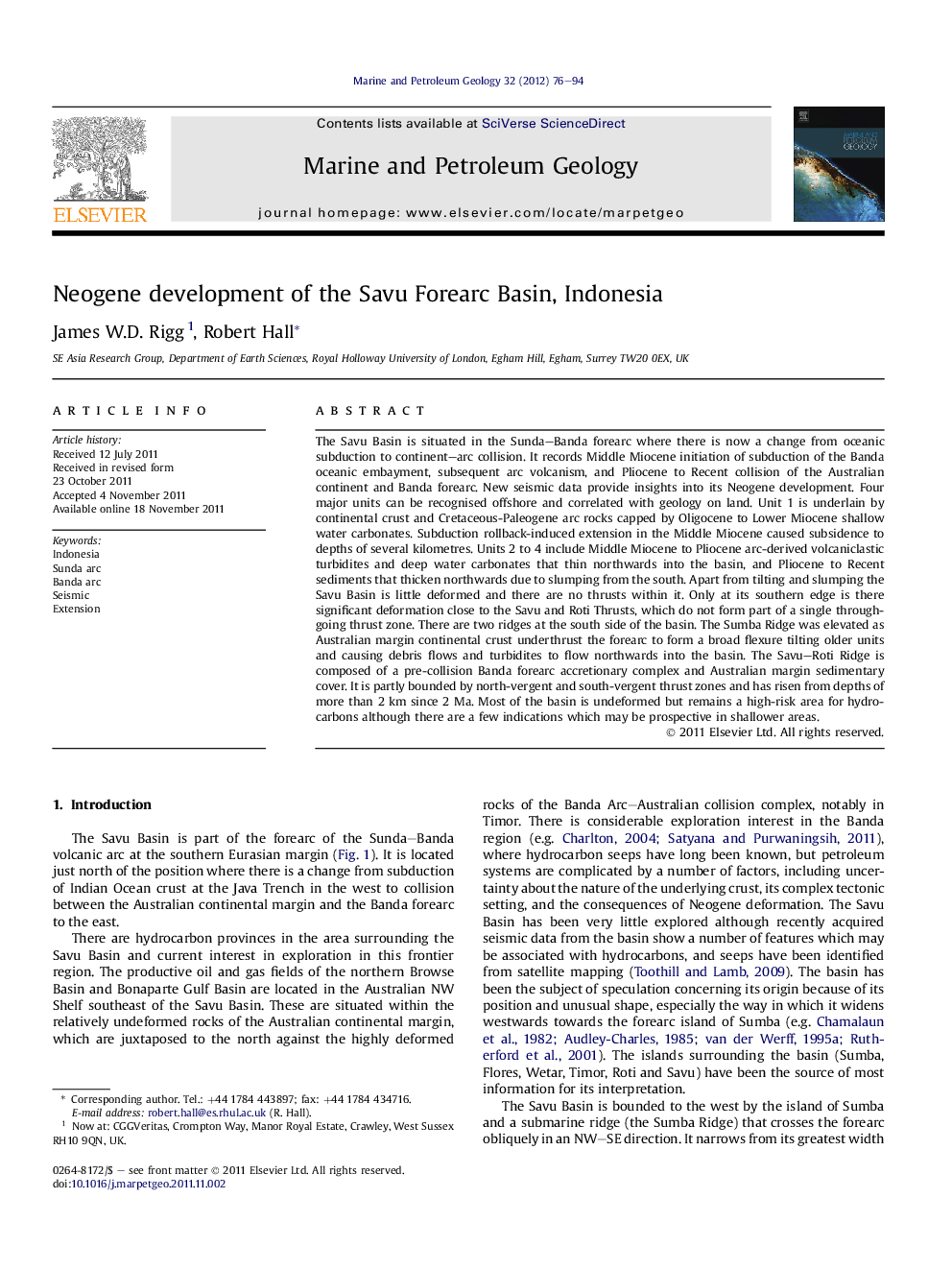| کد مقاله | کد نشریه | سال انتشار | مقاله انگلیسی | نسخه تمام متن |
|---|---|---|---|---|
| 4695924 | 1351644 | 2012 | 19 صفحه PDF | دانلود رایگان |

The Savu Basin is situated in the Sunda–Banda forearc where there is now a change from oceanic subduction to continent–arc collision. It records Middle Miocene initiation of subduction of the Banda oceanic embayment, subsequent arc volcanism, and Pliocene to Recent collision of the Australian continent and Banda forearc. New seismic data provide insights into its Neogene development. Four major units can be recognised offshore and correlated with geology on land. Unit 1 is underlain by continental crust and Cretaceous-Paleogene arc rocks capped by Oligocene to Lower Miocene shallow water carbonates. Subduction rollback-induced extension in the Middle Miocene caused subsidence to depths of several kilometres. Units 2 to 4 include Middle Miocene to Pliocene arc-derived volcaniclastic turbidites and deep water carbonates that thin northwards into the basin, and Pliocene to Recent sediments that thicken northwards due to slumping from the south. Apart from tilting and slumping the Savu Basin is little deformed and there are no thrusts within it. Only at its southern edge is there significant deformation close to the Savu and Roti Thrusts, which do not form part of a single through-going thrust zone. There are two ridges at the south side of the basin. The Sumba Ridge was elevated as Australian margin continental crust underthrust the forearc to form a broad flexure tilting older units and causing debris flows and turbidites to flow northwards into the basin. The Savu–Roti Ridge is composed of a pre-collision Banda forearc accretionary complex and Australian margin sedimentary cover. It is partly bounded by north-vergent and south-vergent thrust zones and has risen from depths of more than 2 km since 2 Ma. Most of the basin is undeformed but remains a high-risk area for hydrocarbons although there are a few indications which may be prospective in shallower areas.
► Forearc at position of oceanic subduction to continent–arc collision change; continental not oceanic basement.
► Seismic stratigraphy correlated with Sumba geology; Middle Miocene extension and subsidence.
► Mio-Pliocene volcaniclastics and pelagic carbonates thicken northwards due to slumping from south.
► No deformation except tilting and slumping within basin; thrust zone at S edge not continuous.
► Uplift of southern ridges due to Australian margin thrust beneath Banda forearc.
Journal: Marine and Petroleum Geology - Volume 32, Issue 1, April 2012, Pages 76–94